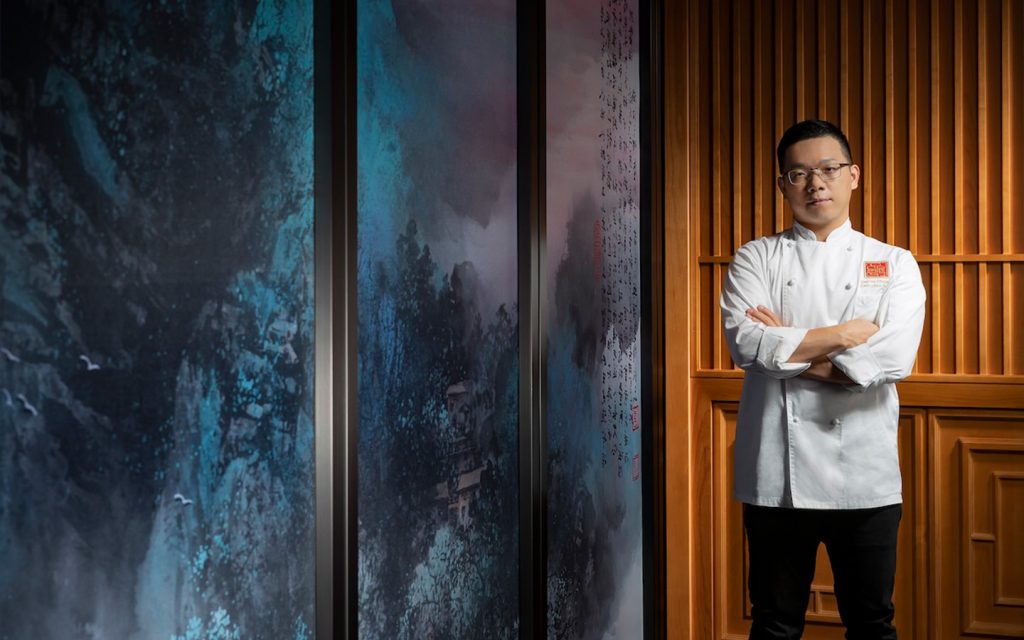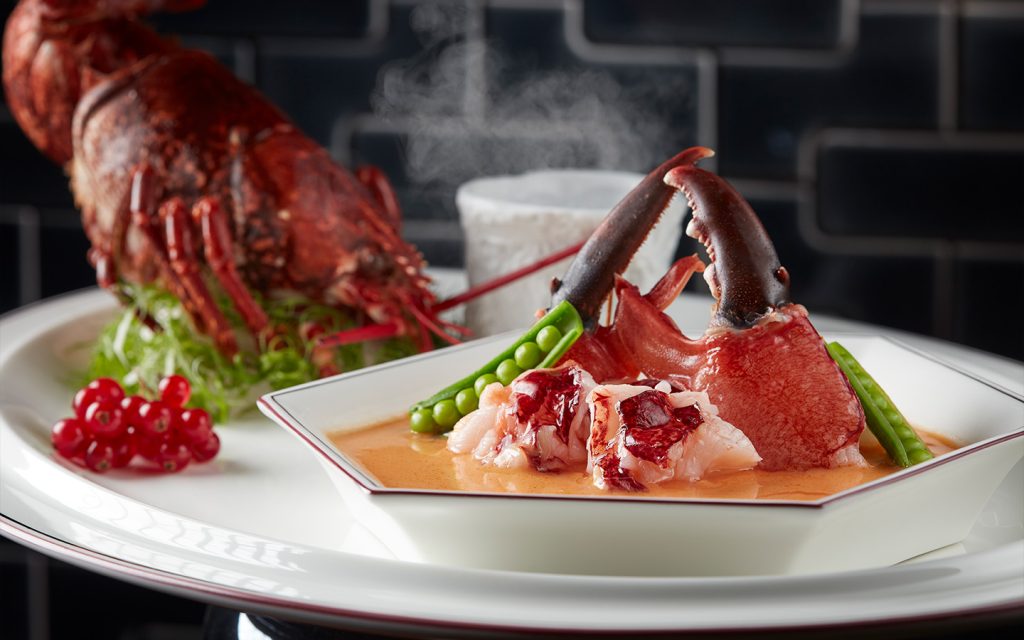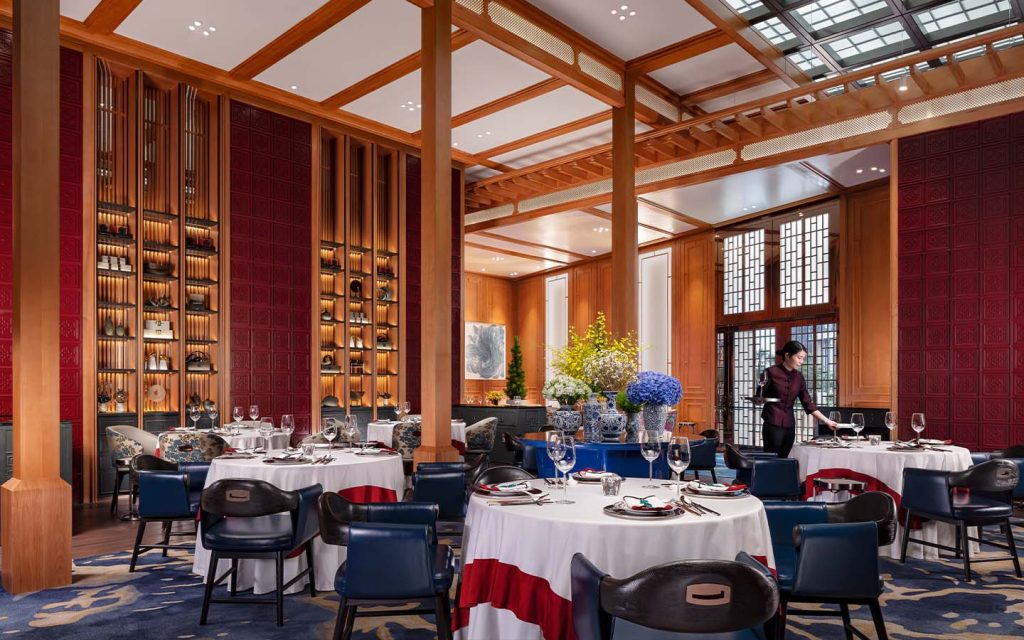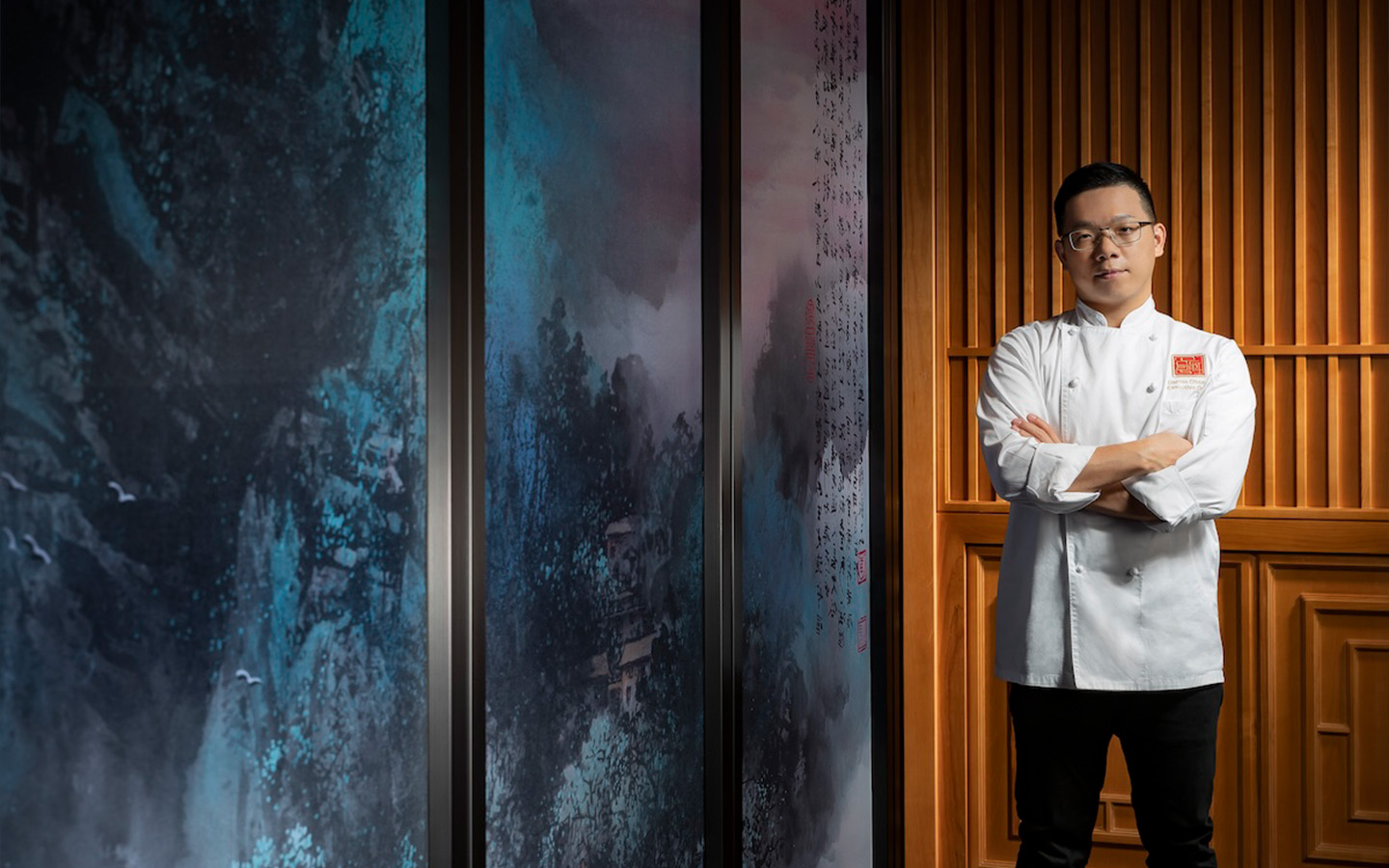Even amid Macao’s superlative array of Cantonese restaurants, Pin Yue Xuan stands out. Many great establishments succeed by being simultaneously nostalgic yet fresh, traditional yet forward-thinking – but The Venetian Macao’s mecca of Cantonese fine dining distinguishes itself with the thoughtfulness and subtlety of its innovative touches.
Launched in December 2021, Pin Yue Xuan is all about Cantonese cuisine viewed through a deft lens. We’re not talking flamboyant plating or fussy molecular gastronomy, but rather, a carefully considered tweak here, a borrowed French technique there. It’s these understated touches that make all the difference.
Heading up the kitchen is Chef Darren Cheung, who’s breathing new life into classic recipes. By championing freshness and fine ingredients, the Guangdong native earned the restaurant the 2023 Trip.com Global Elite Restaurant List Platinum award and “Michelin selected” status.
We caught up with the rising culinary star to hear more about his early career, his obsession with freshness, and why he doesn’t waste time with “modern” plating.

You grew up on a peanut farm. What was that like?
I was born in Guangdong province, where my family grew peanuts on a hill. I naturally woke up at daybreak, which helped me develop discipline and time management skills.
When I was six years old, I started harvesting peanuts by hand. One by one, I would remove the nuts from the shells. When we were done, my mother and I would take the nuts into town and then feed the leftovers to our pigs and chickens. I learned to treasure food and never waste it.
Did you stumble upon cooking as a profession, or was it always your dream?
Actually, it was born of necessity. My family moved to Hong Kong when I was 12, and I cooked for my siblings because my parents worked late. Back then, I often visited the local library and ended up reading a lot of recipes by Pearl Kong Chen, whose grandfather was the well-known Cantonese food connoisseur Jiang Taishi. She wrote about traditional Cantonese, Hakka, Chiu Chou and Shunde cuisines and shared the stories behind the dishes, which I appreciated.
Kitchen culture can be tough. Any lessons from your early jobs?
In 2005, I started at a seafood restaurant in Hong Kong. I was very junior, working on the wok team. I always went into the restaurant early, and the senior chef on my team would teach me how to manage the wok. The chef was harsh, but I learned to pay attention to detail.
Later, I worked at Lei Garden, where there was a strict hierarchy, and I was the most junior person on the wok line. For a while, I listened to whatever the more senior chefs told me to do. However, I realised that I would never develop my own cooking style that way. That’s when I started thinking about each step more critically.
You’re a relatively young chef. Do you think this lends you a fresh perspective?
I think it’s more about being resourceful and open-minded. Since we’re more connected than ever, we can learn from others around the world. Sometimes, I use French cooking techniques, Spanish ingredients, and classic Cantonese marinades – I like to experiment and be creative while ensuring that Cantonese heritage and essence remain the same. For example, I use French produce and a Western slow-cooking style to bring out the blue lobster’s delicate flavours in my steamed “Brittany lobster with egg white in seafood broth” dish.

It seems like ‘modern Cantonese’ is having a moment. What’s your take?
Cantonese cuisine was already regarded as modern when I entered the industry. Nowadays, when people say “modern”, I think they are referring to the dish’s presentation. I don’t care so much for contemporary presentations because they emphasise visuals. I prefer to keep it simple – if I spend all my time decorating plates, the hot dishes will go cold. This is key in Cantonese cuisine.
What kind of innovations are you bringing to the cuisine?
I think innovation lies in the production process. We use high-quality ingredients, a wide range of techniques and prioritise freshness.
One example is our minced fish soup with rice vermicelli and fish maw. In the old days, chefs cooked the soup for a whole day, kept it overnight, and then re-boiled it. But I want everything to be as fresh as possible, so we make our soup the same day and never re-boil it.
So, the fresher, the better?
Yes, definitely. It’s the same for our barbecued pork, char siu. We roast it to order. And for our golden fish dumplings with grouper and crab roe, we cut the grouper on the day and use the whole fish – the bones for the soup, the flesh for the dumplings – so nothing goes to waste. We also wrap our dumplings on the day, never in advance.
But you keep an eye on tradition, though?
I am not trying to totally reinvent classic dishes. I carefully consider every step and ingredient, changing the cooking process to enhance the flavours and freshness. I insist on maintaining traditional Cantonese cuisine principles while experimenting with modern cooking methods. With this approach, I strive to create Cantonese cuisine that reflects the times.

The “品” character in Pin Yue Xuan (品粵軒) is a source of inspiration for you. Can you elaborate on that?
The character is made up of three components called “mouth radicals”. For me, each mouth represents part of the dining experience at the restaurant: tasting tea, wine and delicacies.
The Pin Yue Xuan appetiser platter represents my interpretation of this character. For “tasting tea”, I’ve made bean curd rolls filled with assorted vegetables smoked in Pu’er and Tieguanyin tea. For “tasting wine”, we have selected the 20-year Huadiao wine and some strong baijiu for our marinated prawns in 20-year Huadiao wine sauce, which provides a fresh aroma.
Finally, we serve our “gold caviar with salted egg and deep-fried bean curd” dish. The ingredients elevate this creation to the next level, making it a great example of “tasting delicacy”.
Which little detail at the restaurant do you hope people notice?
When guests enter the restaurant, we invite them to choose a custom teapot that speaks to them. I love our teapots; they are very special. If our tea master is preparing kung fu tea for example, we use special translucent white teacups so diners can see the colour and body of the tea.
How do you hope diners feel after a meal at Pin Yue Xuan?
I hope people from Guangdong, who are more familiar with our dishes, feel at home in our restaurant. When foreigners dine with us, I hope they gain a deeper understanding of Cantonese cuisine as a vital part of Chinese culture.



